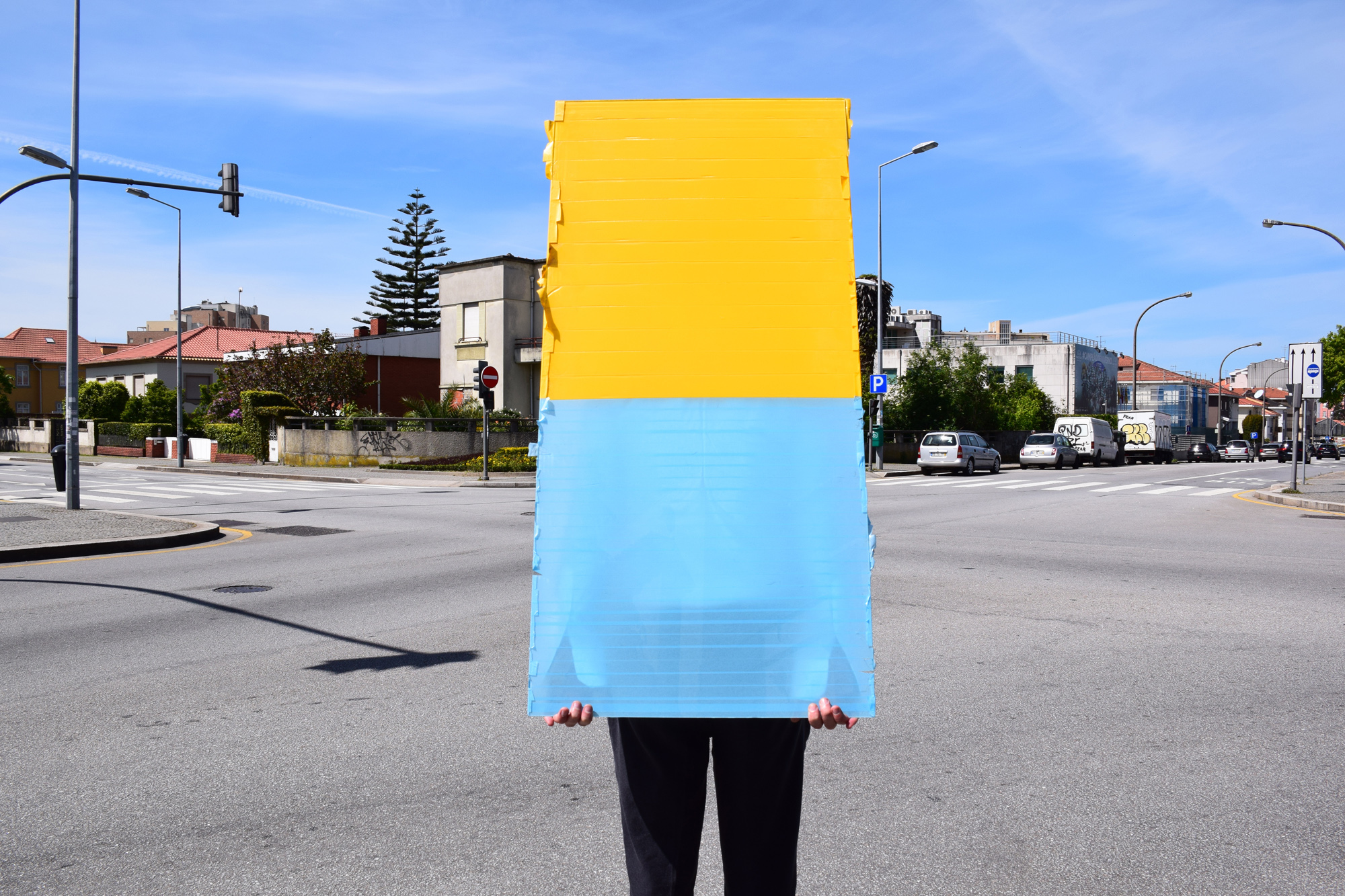Paulo Luís Almeida is an artist, associate professor at the University of Porto and an integrated researcher at i2ADS.
Flávia Costa is a visual artist and a PhD student at the University of Porto. She is also a researcher at i2ADS Research Institute in Art, Design with Society, with a grant from the Foundation of Science and Technology.
An Ecology of Care provides a philosophical basis for developing practical and aesthetic ways to requalify and improve the experience of being-in-the-city. This experience involves the relationship with spatial boundaries that inform gestures in the urban environment, such as fences and walls or social and political limits; it also implies our being sensitive to temporal boundaries that tacitly shape our perception of the city, such as disposable architectures, working rhythms and natural cycles.
In this video paper, we focus on a common performance-drawing project, carried out in two different cities: Helsinki and Porto. Through several actions, we pretend to challenge the dichotomy between human gestures and natural cycles and address the complexity of the relationships between spatial boundaries and the idiorhythm of walking in the city. Our project begins with the premise that the observation of gestures allows us to understand the way we exist in the world. Also, the re-enactment of those gestures in art practice allows us to understand, in an embodied way, the existential and social changes we are currently undertaking.
In “Follow me”, a drawing performed on the fence surrounding the construction of the new KuvA (Helsinki), we problematise drawing as an act of care and relation, built upon idiorhythmic, embodied and communal gestures in a shared space. In “Insula Perdita” we re-enact the death of palm trees in the city of Porto and the inevitable natural cycles and changes that moulds the perception of the city as a frame and ecosystem.
Both practices explore approaches to the Ecology of Care as a frame for artistic research, through the geographical concept of Throwntogetherness: to perform/draw as a responsive relationship between human and non-human (objects, plants, animals) to emphasize the interdependence between non-human and everyday life gestures in building the value of communality.
REFERENCES
Baldacci, C. (2019). ‘Reenactment: Errant Images in Contemporary Art’. in Re-: An Errant Glossary.
Ed. by Christoph F. E. Holzhey and Arnd Wedemeyer. Cultural Inquiry 15. Berlin: ICI Berlin, pp.57–67,
https://doi.org/10.25620/ci-15_07
Berger, J. (2005). Berger on Drawing. Aghabullogue: Occasional Press.
Coxon, Ian R. (2017). ‘Care as human Being: Introducing a new field of study and practice’.
in Fusion Journal special issue - Towards an Ecology of Care. Accessed 10-02-2021,
URL: http://fusion-journal.com/care-as-human-being-introducing-a-new-field-of-study-and-practice/
Flusser, V. (2014). Gestures. Translated by Nancy Ann Roth.
Minneapolis University of Minnesota Press.
Heidegger, M. (1962). Being and Time. Translated by J. Macquarrie and E. Robinson.
Oxford: Basil Blackwell.
Ingold, T. (2011). Being Alive – Essays on Movement, Knowledge and Description.
New York: Routledge.
Massey, D. (2003). ‘Some Times of Space’. In Olafur Eliasson: The Weather Project.
London: Tate Publishing, pp.107-118.
Petit, P. (1997). Traité du funambulisme. Preface by Paul Auster. Arles: Actus Sud
Ramos. M. J. (2004). ‘Drawing the Lines – The Limitations of Cultural Ekphrasis’.
In Pink, S., Kurti, L. and Afonso, A.I. (eds). Working Images – Visual Research and Representation
In Ethnography. London: Routledge.
Virilio, P. (2002). ‘The Overexposed City’. In The Lost Dimension. Translated by Daniel Moshenberg.
New York: Semiotext(e), p. pp.9-27.
Kalb, P. (2015). A Photorealism Fit for Politics. The Transformative Drawing of Andreas Bower. In Pergam, E. Drawing in the Twenty-First Century – The Politics and Poetics of Contemporary Practice. Abingdon/New York: Routledge.

